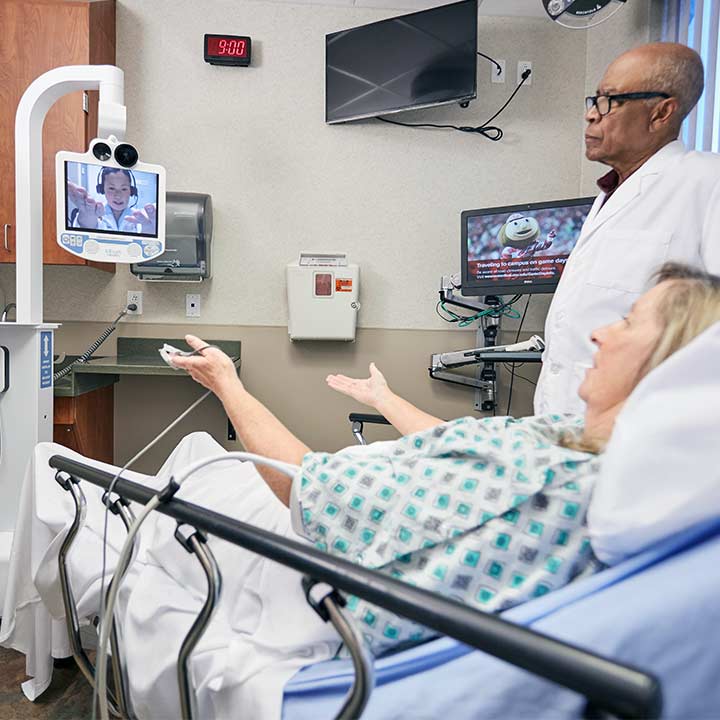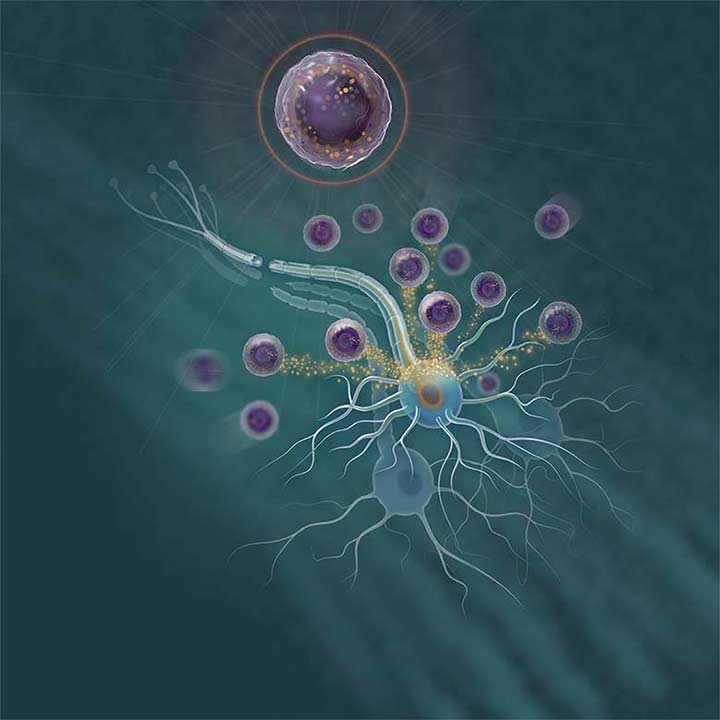
Years before COVID-19 made telehealth commonplace for health care providers and patients, stroke neurologists and emergency medicine physicians were accustomed to using advanced telemedicine, called telestroke, for acute stroke treatment. Faculty at The Ohio State University College of Medicine are national leaders in stroke care, and The Ohio State University Wexner Medical Center was one of the first hospitals in the country—and one of only nine Ohio hospitals—to be designated a comprehensive stroke center by The Joint Commission and the American Heart Association/American Stroke Association.
“Telestroke saves lives by immediately increasing access to advanced stroke care in regions that don’t have neurovascular and neurosurgical physicians,” says
Deepak Gulati, MD (external link), assistant professor of Neurology at the Ohio State College of Medicine. “When someone is taken to an emergency department with stroke symptoms, experts are mobilized both there and at Ohio State through a ‘stroke alert.’”
May 2021 marked the 10th anniversary of the formation of
Ohio State’s Telestroke Network (external link), which delivers critical stroke expertise to patients and their care teams across Ohio. Experts skilled at treating the most complex strokes and cerebrovascular diseases are ready to deliver around-the-clock emergent surgical and endovascular stroke treatment in more than 25 hospitals in Ohio. To date, more than 16,000 video consultations have been provided through the Telestroke Network.
Computed tomography (CT) scans, other real-time testing and patient interviews allow both the virtual and on-site teams to quickly identify bleeding and damage in the brain. Since only a small minority of stroke patients qualify to receive intravenous clot-buster medications or surgical removal or repair of clots to stop brain bleed, having expertise virtually in the room to explore options is critical to developing a treatment plan.
“Patient outcomes improve with early action in treatment and restoring blood flow,” says Dr. Gulati. “For every minute delay in medical treatment, the brain loses 2 million neurons.”
While some patients can successfully remain at their community hospitals to receive stroke care, others require advanced care or surgery to remove clots and are transferred to the Ohio State Comprehensive Stroke Center.
Approximately 800,000 people in the United States suffer one of two kinds of stroke each year. Ischemic stroke occurs when a blood clot blocks a blood vessel in the brain, which injures brain tissue. Hemorrhagic stroke is caused by a blood vessel that bursts and bleeds into the brain.
Ohio State continues to advance the science and success of stroke treatments through collaboration and leading the use of advanced technology. Experts are able to offer cutting-edge treatment in state-of-the-art facilities, such as a hybrid operating room that is outfitted with an interventional radiology suite and an operating table that is transparent to X-rays. The unique setup allows vascular neurologists, neocritical care physicians and vascular neurosurgeons to provide emergency stroke care, both surgical and endovascular procedures, in the same room.
As the use of telemedicine continues to evolve and grow to meet the demands of 21st-century medical care, Ohio State will continue to develop advanced care to all patients across the region.

 Years before COVID-19 made telehealth commonplace for health care providers and patients, stroke neurologists and emergency medicine physicians were accustomed to using advanced telemedicine, called telestroke, for acute stroke treatment. Faculty at The Ohio State University College of Medicine are national leaders in stroke care, and The Ohio State University Wexner Medical Center was one of the first hospitals in the country—and one of only nine Ohio hospitals—to be designated a comprehensive stroke center by The Joint Commission and the American Heart Association/American Stroke Association.
Years before COVID-19 made telehealth commonplace for health care providers and patients, stroke neurologists and emergency medicine physicians were accustomed to using advanced telemedicine, called telestroke, for acute stroke treatment. Faculty at The Ohio State University College of Medicine are national leaders in stroke care, and The Ohio State University Wexner Medical Center was one of the first hospitals in the country—and one of only nine Ohio hospitals—to be designated a comprehensive stroke center by The Joint Commission and the American Heart Association/American Stroke Association.